World War I Handmade American Flag to Stay in Scotland
The Smithsonian Institution extends its loan of the historic artifact to Islay—a small island with a big heart
/https://tf-cmsv2-smithsonianmag-media.s3.amazonaws.com/filer/5f/d5/5fd5d184-05c7-4ce9-89ba-5e90437e646e/ww100-otranto-hr-24.jpg)
Earlier this month as the Smithsonian Institution’s Ambassador at Large, I returned to Islay (eye-luh), the beautiful Scottish island in the Inner Hebrides that I wrote about last April. One hundred years ago, in 1918, Islay experienced terrible twin tragedies—the sinking of two troop carriers bringing American soldiers to the front in World War I. Its people, known as the Ileach (ill-e-ack), managed to respond to those disasters with incredible courage and compassion. The most tangible symbol of the islanders’ efforts was a handmade American flag crafted after the first ship went down in February 1918 for use during the funerals of the fallen soldiers.
That flag came to the Smithsonian, where it was eventually housed in the collections of the National Museum of American History. Earlier this year, the American History Museum agreed to a six-month loan of the flag to the Museum of Islay Life for the island’s 100th anniversary commemoration. Recognizing the poignancy of the commemoration, and how powerfully this historical artifact has spoken to Ileach today, and particularly to the younger generation, the loan was recently extended to 2020, but let me tell you why it happened.
The first tragedy, the sinking of SS Tuscania by a German U-Boat, occurred on February 6, 1918. Most of the 2,000 American soldiers and 300 largely British crew were rescued at sea by British destroyers. More than 300 drifted in broken lifeboats and rafts to Islay’s southeastern rough, cliff-lined rocky shores. Some 140 survived. They were rescued and cared for by Ileach teenagers, women, children and the elderly—as most of Islay’s young men had gone off to war. But some 180 American soldiers and crew from the Tuscania died on Islay’s shores or soon after. In a make-shift mortuary, Islay’s police Sergeant Malcolm MacNeill documented their corpses and possessions for later identification. Ileach prepared the bodies, built coffins and dug four new burial grounds.
This was no easy task. Islay only had a population of about 5,000 farmers, shepherds and fishermen. There was no electricity, no telephones and only dirt roads. Before beginning a series of mass funerals, islanders realized they did not have an American flag to honor the soldiers.
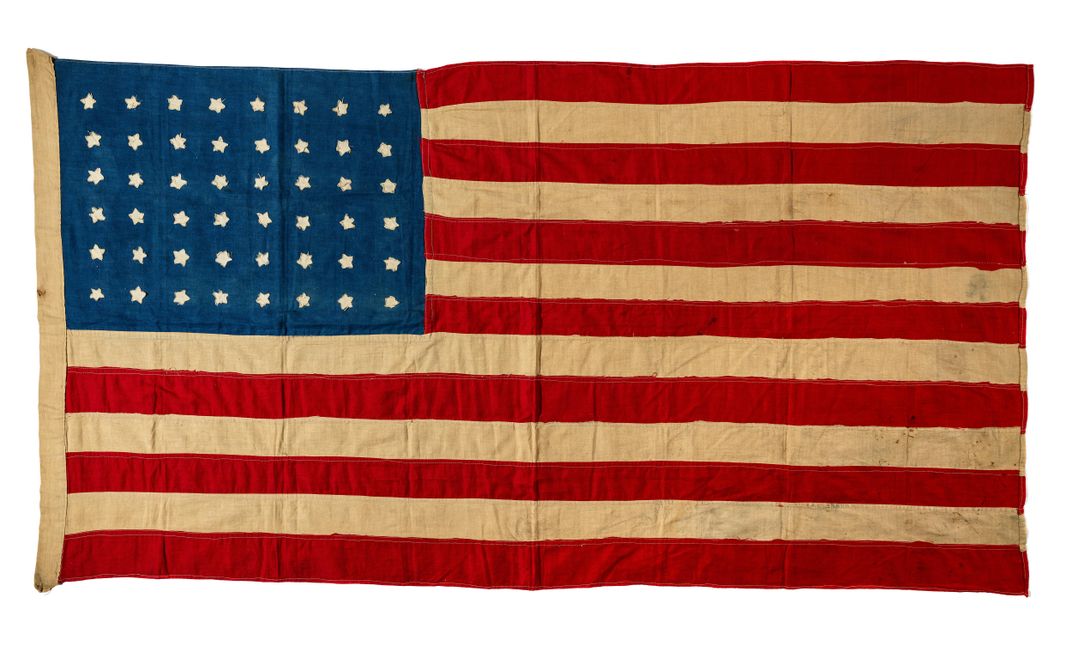
So, in the middle of the night, after consulting an encyclopedia, they stitched together by candle-light a Stars & Stripes out of scraps of material. The American flag was carried aloft, along with the Union Jack, in processions led by bagpipers for four days of funerals.
American survivors served as pall bearers. The flag waved over the graves and inspired the singing of the American national anthem, along with renditions of “God Save the King.”
In May 1918 a visiting U.S. reporter was given the hand sewn American flag with the islanders’ request to deliver it to President Woodrow Wilson and then to have it put in a museum so that events of the time could be remembered. At the Smithsonian, the flag from Islay went on exhibit for about a decade; it was then put in storage until the summer of 2017 when the manager of the Islay museum Jenni Minto, visited the American History Museum and met with Smithsonian curator and chair of military history Jennifer Jones to request its loan. I was delighted to facilitate that arrangement.
Jones brought the flag back to Islay in May 2018 along with a specially built case, where it was installed in the museum. We participated in an international commemoration held on the island, with visiting dignitaries that included Princess Royale Anne, U.S. Ambassador Woody Johnson and other military and diplomatic representatives.
Local quilters had made a copy of the flag to be used in various activities. Islay’s teachers and students devised skits and made artworks to memorialize the tragedy and response. The BBC did a documentary, the media gave wide coverage to the flag, the laying of wreaths and the ceremonies. Greatly impressed by the story of the flag, Ambassador Johnson asked if another copy could be made for the U.S. Embassy in London.
For me, most memorable was the meeting of the families. Among the attendees were descendants of some of the American soldiers who’d been saved by Ileach forebearers and who personally thanked the descendants of the Islay families—it was hands and hugs reaching out in gratitude across a century.
The tragedy still resonated with the islanders, where 200 young men perished in the war. At the time of Tuscania’s sinking 160 islanders had been killed. Ileach mothers and fathers didn’t know where, when or how their sons had died, much less where they were buried and how their remains were treated. This is perhaps why the Islay villagers took such good care of the Americans and treated them with the respect they hoped someone else’s parents were paying to their fallen sons.
After the flag arrived, attendance at the Islay museum boomed—the highest levels ever—with the artifact inspiring those on the island to learn more about their history. It also attracted large numbers of summer tourists who typically visit the island’s famous Scotch whisky distilleries. Reader’s Digest did a feature on the dozen most surprising places to find an American flag—among them, the Moon, the South Pole, Mount Everest, and . . . Islay. The Islay Quilter’s duplicate flag was sent to Edinburgh Castle to be proudly paraded at the Royal Military Tattoo.
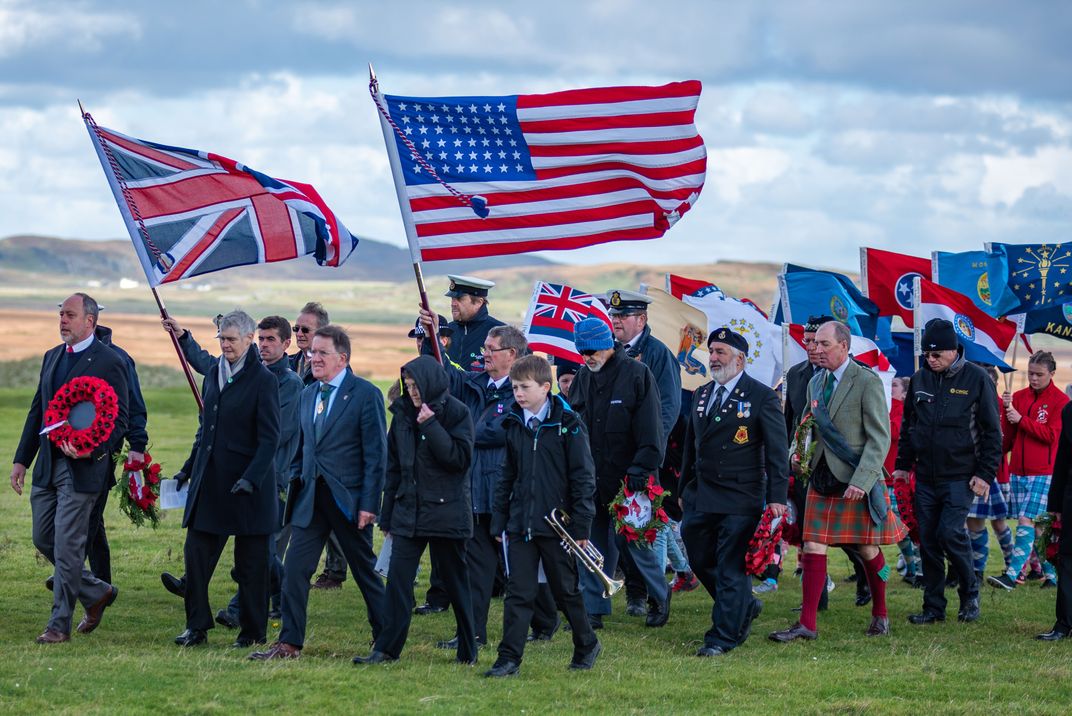
The centennial commemoration continued with the marking of the Islay’s second 1918 tragedy—the October 6 sinking of another ship, HMS Otranto. With 360 largely British crew and commanded by Ernest Davidson, the Otranto was carrying some 650 American soldiers mainly from Georgia, along with several dozen French fisherman. Near Islay in a fierce storm, it collided with another ship, the Kashmir.
In an amazing act of bravery and skill, Francis Craven commanding a British escort destroyer, the Mounsey, maneuvered his ship next to Otranto in the rough seas, allowing soldiers and crew to jump across onto his decks. As the two ships heaved up and down in the high seas, hundreds jumped but were drowned or were crushed in between the hulls. Almost 600 jumped successfully and survived. The ships finally had to separate with the Otranto sinking. Of those left on board, 21 survived, swimming to Islay’s shore and then rescued by islanders. In total, some 470 died. Again, Islay’s inhabitants nursed survivors. Sergeant McNeill again had to document the deceased, filling up a notebook with descriptions of bodily characteristics and possessions found. Again, islanders built coffins, prepared burial grounds and organized the funerals.
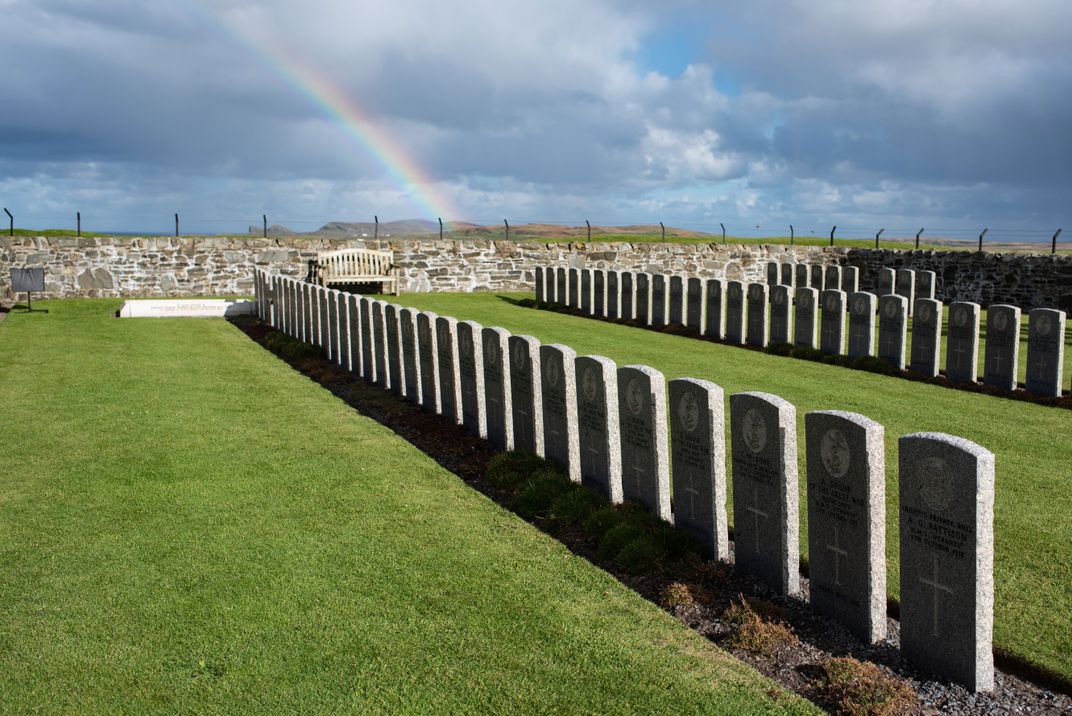
Soon after the disaster, the war ended with the Armistice on November 11. Ironically, the soldiers who had been sent to fight, and who died in the October tragedy, would probably never have seen combat action.
The local commemoration on October 6, 2018, was a capstone to a year of activity. I visited Islay with the Smithsonian’s Josh Gorman, a conservator from the American History Museum. He had been sent to check the condition of the flag for its return to Washington, D.C. The night before, we attended an island event, honoring the Otranto’s men and ensuing events. It featured readings from letters of those involved, pipers, traditional music from Georgia and Islay, and songs by the Islay High School Choir, culminating with hundreds singing “Amazing Grace.”
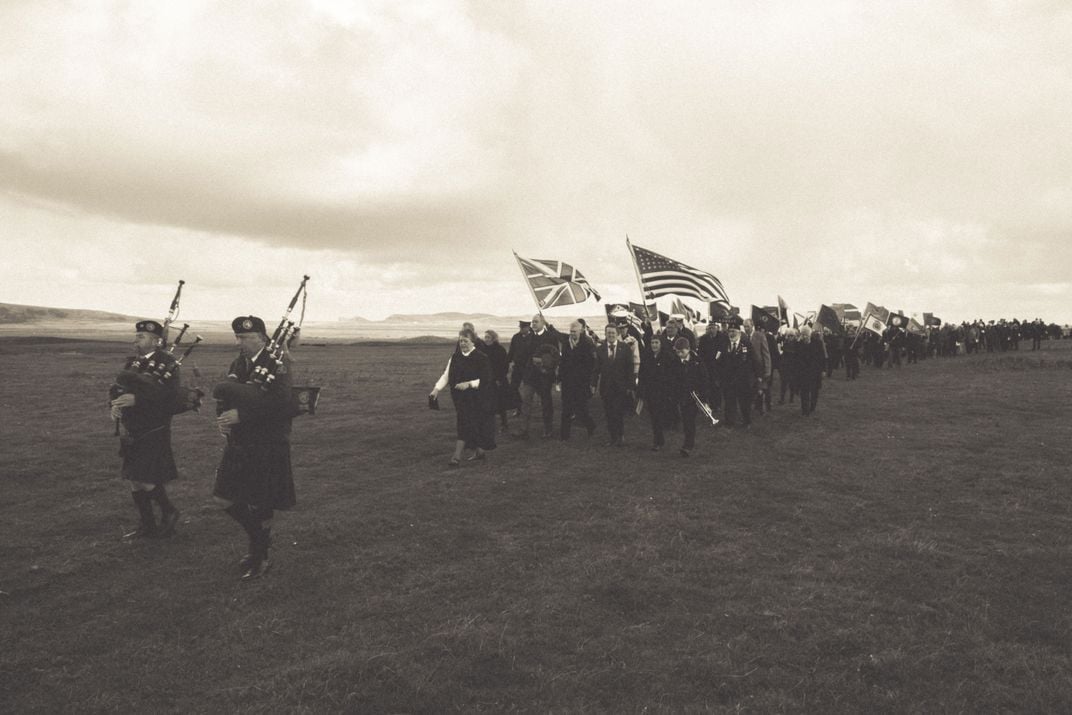
The next morning, we joined a procession walking to the Kilchoman Military Cemetery, home to scores of graves of British crew and Americans who died in Otranto’s sinking. We carried U.S. state flags made by Ileach students to represent the American soldiers—I carried the District of Columbia flag. We were led by bagpipers, a Union Jack and the quilters’ copy of the famed Islay flag. A number of us took photographs in black and white to recreate the scene as if it were a day in 1918.
We gathered at the graveyard, facing the sea and a memorial to the deceased. As Reverend Valerie Watson began the service, rain clouds parted, and the crowd was moved by the appearance of a rainbow.
Lord George Robertson, an Ileach, Member of the House of Lords and former U.K. Defense Minister, who also served as Secretary-General of NATO, gave the keynote tribute. His grandfather was Sergeant MacNeill who had documented the deceased in notebooks—now in the Islay museum, and he solemnly recounted the tragedy and the actions of the islanders. Libby Morris, an Ileach farmer’s widow, sang a soulful lament—"In Memory of the Otranto” by Charles McNiven—in Scottish Gaelic. A contingent of coastguard gave their salute. Participants laid wreaths at the memorial and many put markers on each of the graves to honor the fallen. Among them was Captain Davidson’s grandson, the granddaughter of one of the Americans who’d been rescued, and many others. We then had a dram of whisky, and adjourned to a community gathering at the nearby Kilchoman distillery.
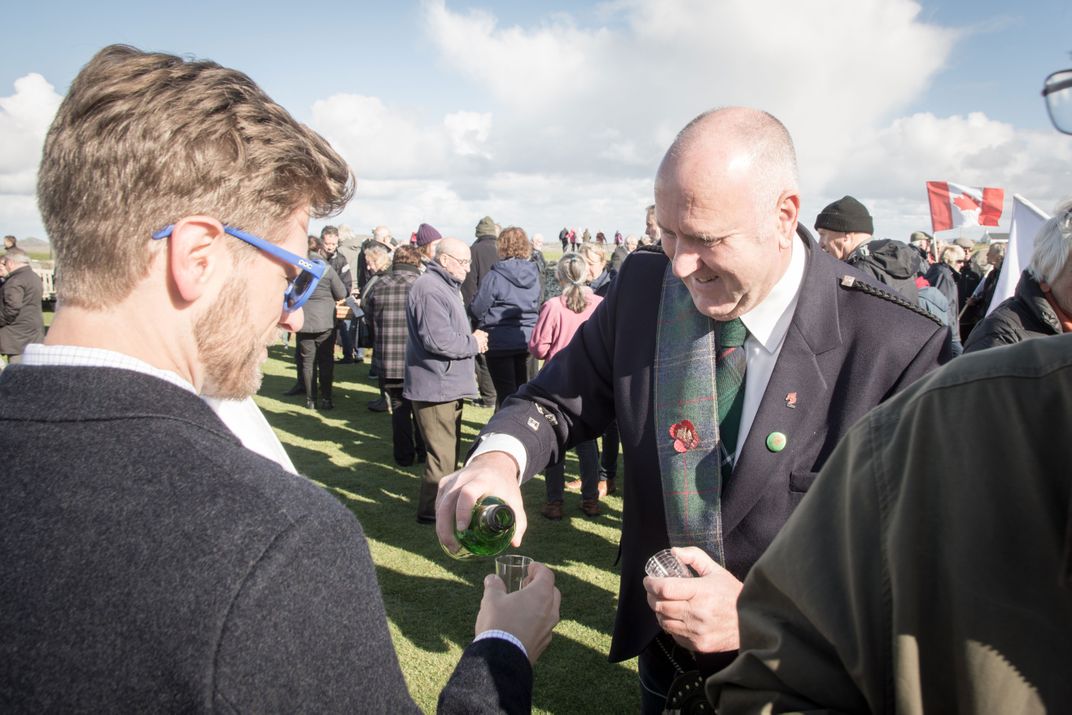
There, some 500 islanders and visitors ate together and enjoyed performances and displays relating to the 1918 tragedies. Students performed a play depicting the use of the Stars & Stripes in the burials. Paintings by Islay’s artists interpreting the tragedies were exhibited. The Islay singers performed. Photo-text panels provided historical background on the island, and the sinking of both Tuscania and Otranto.
The quilters presented another duplicate Islay American flag to Lord Robertson for him to convey to the American Ambassador. Then Robertson had an announcement. He thanked the Smithsonian for the historic loan of the flag, described its impact upon the island, its youth and his neighbors, and announced that the Smithsonian would extend the six-month loan agreement until 2020.
The news was greeted with great enthusiasm by the hundreds in attendance—a good portion of Islay’s whole population. For me, it was a fitting tribute to this small island with its big heart.
/https://tf-cmsv2-smithsonianmag-media.s3.amazonaws.com/accounts/headshot/kurin.png)
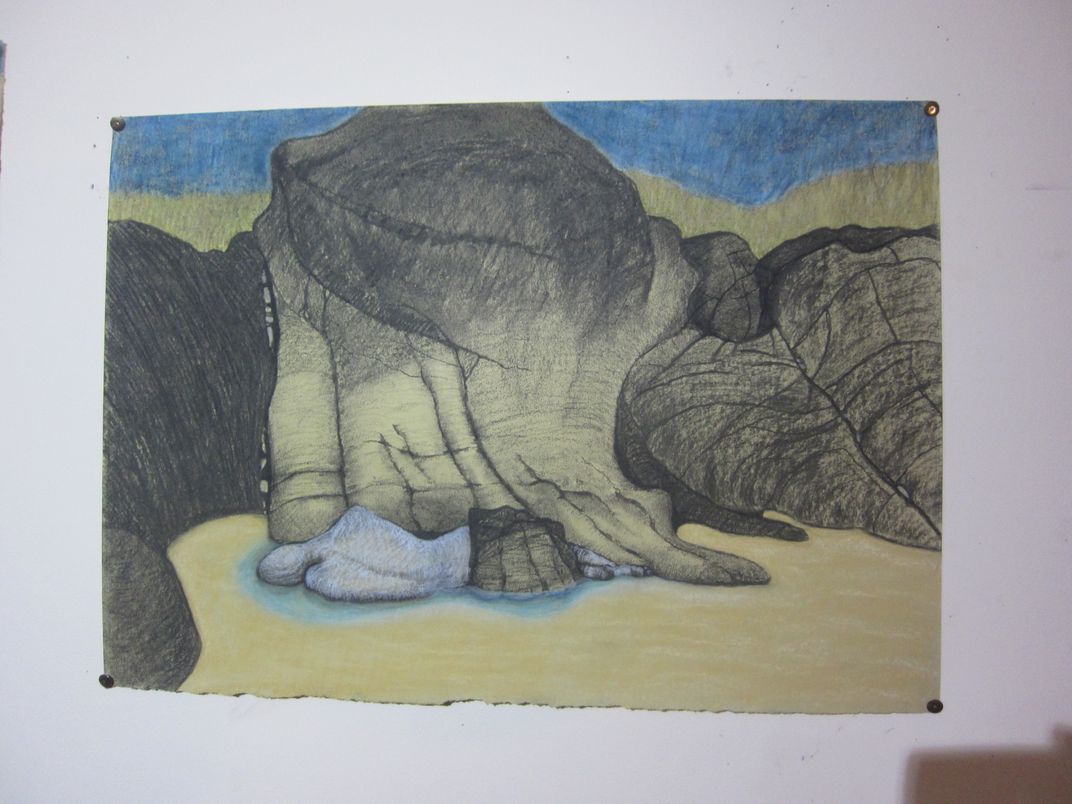
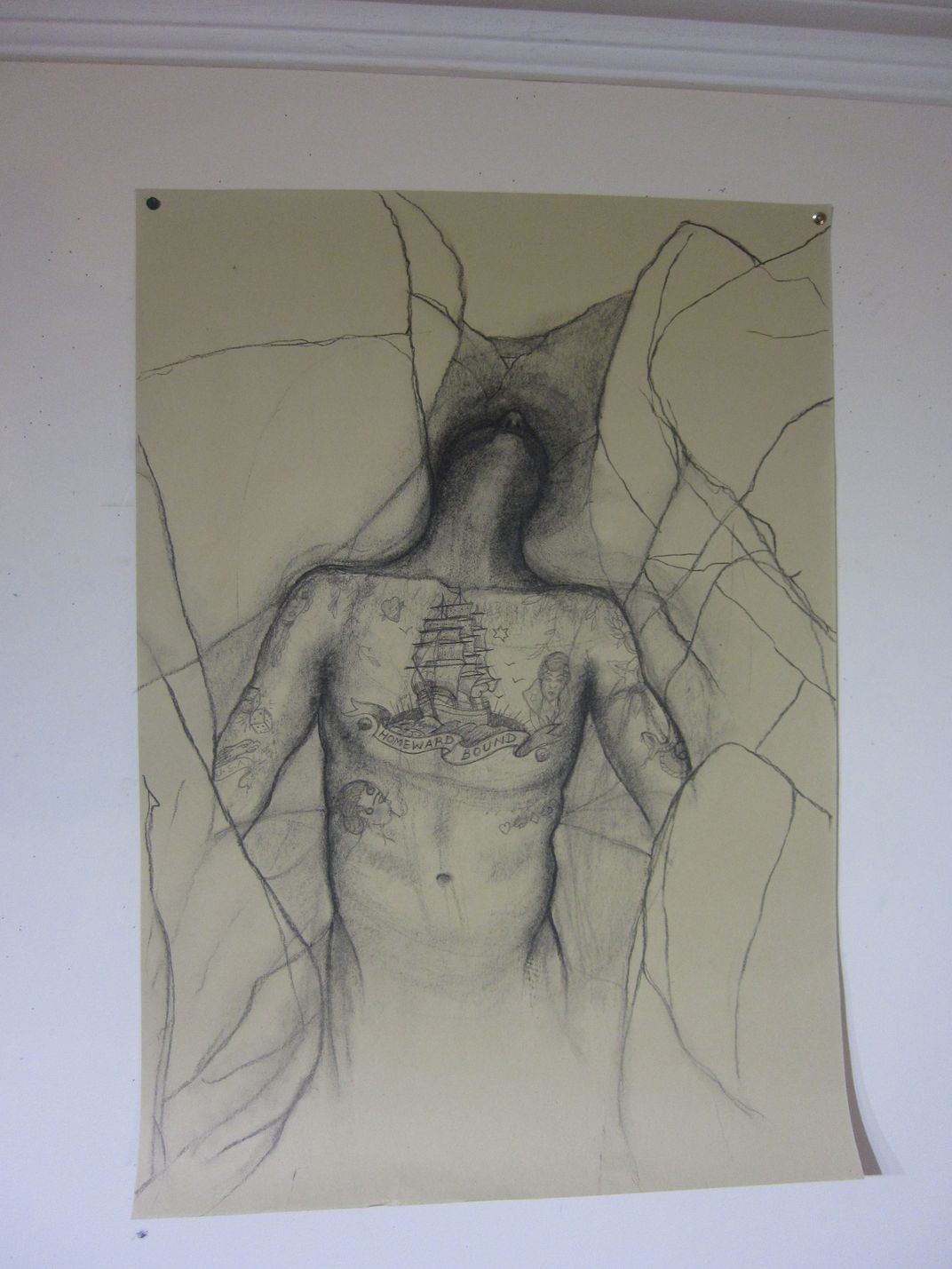

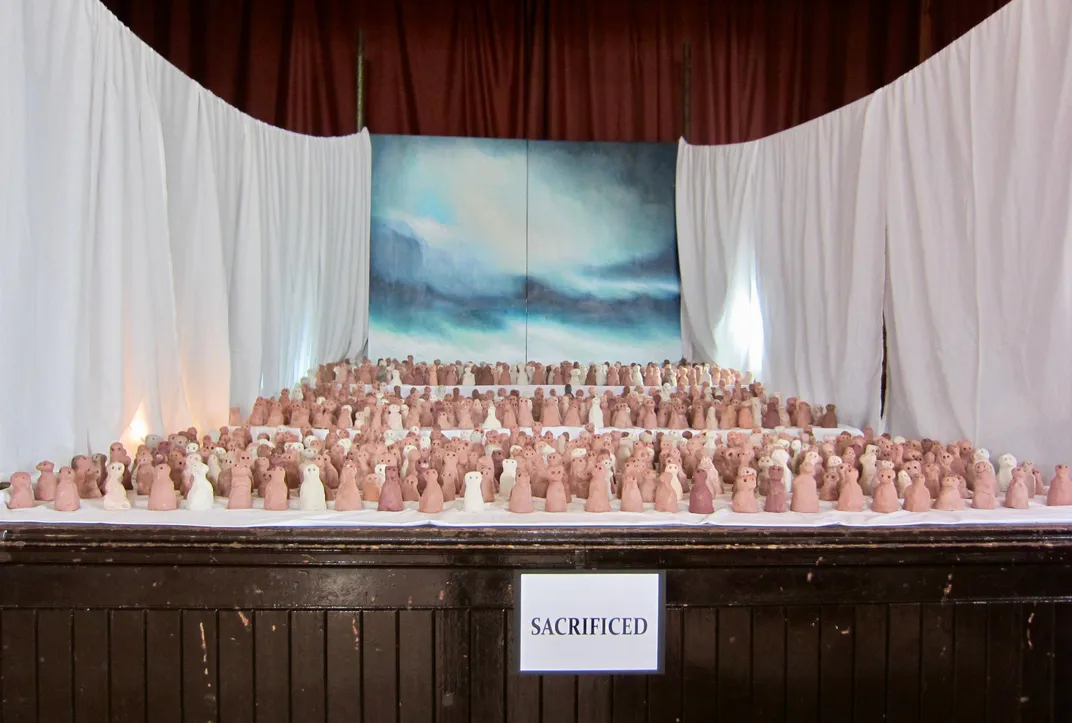
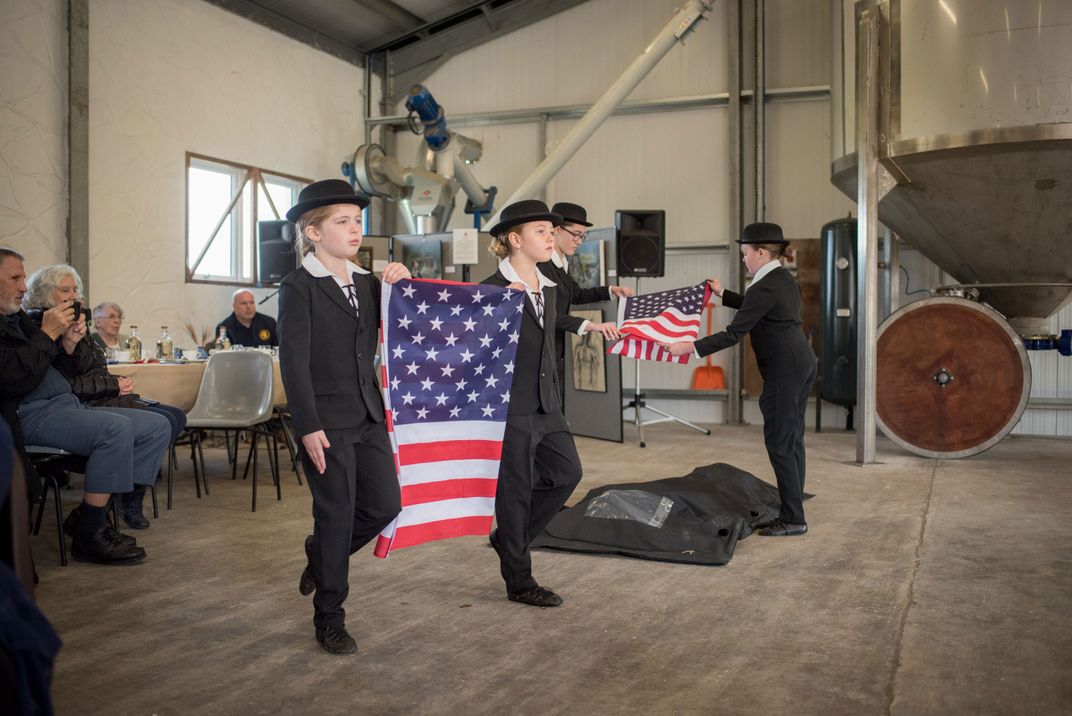
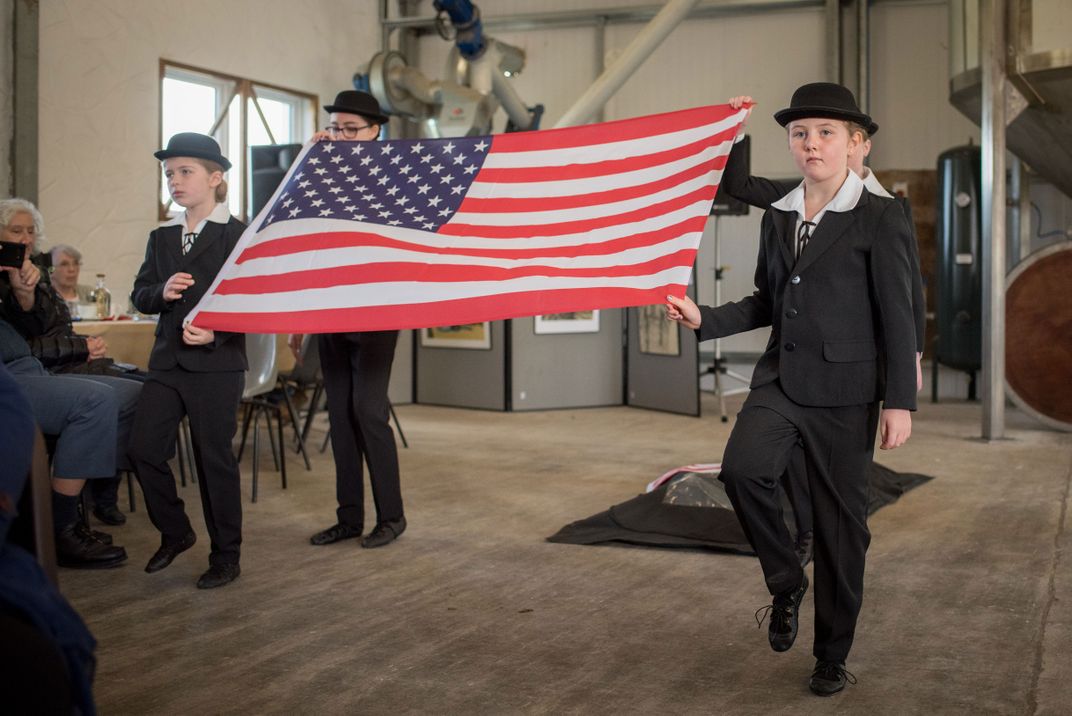
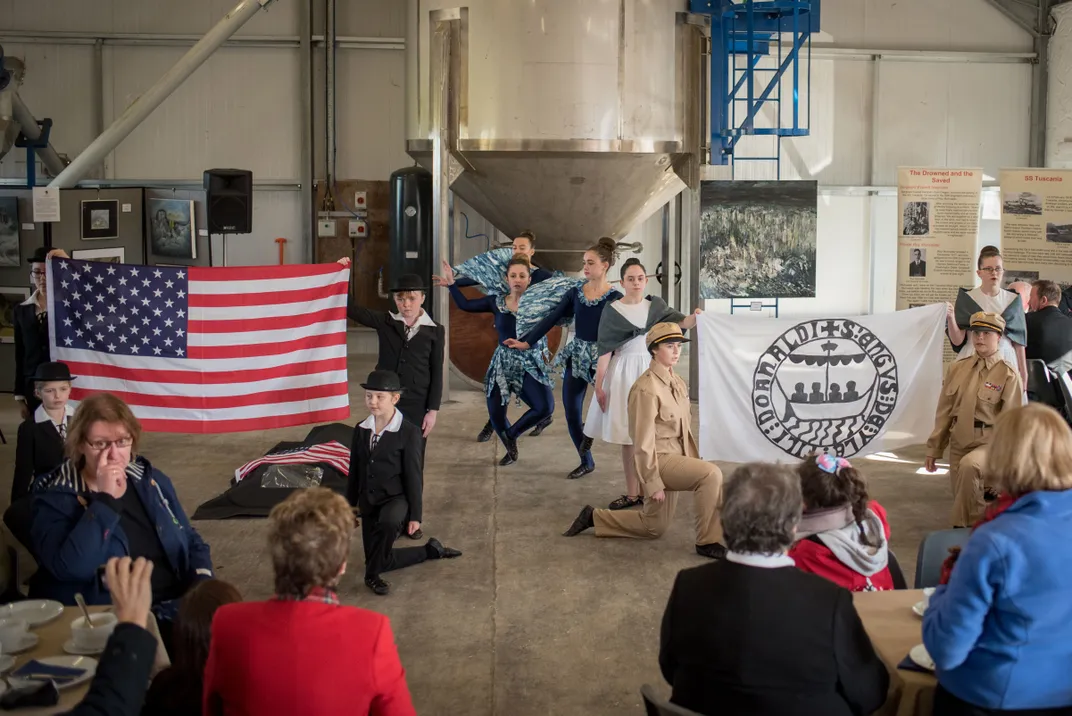
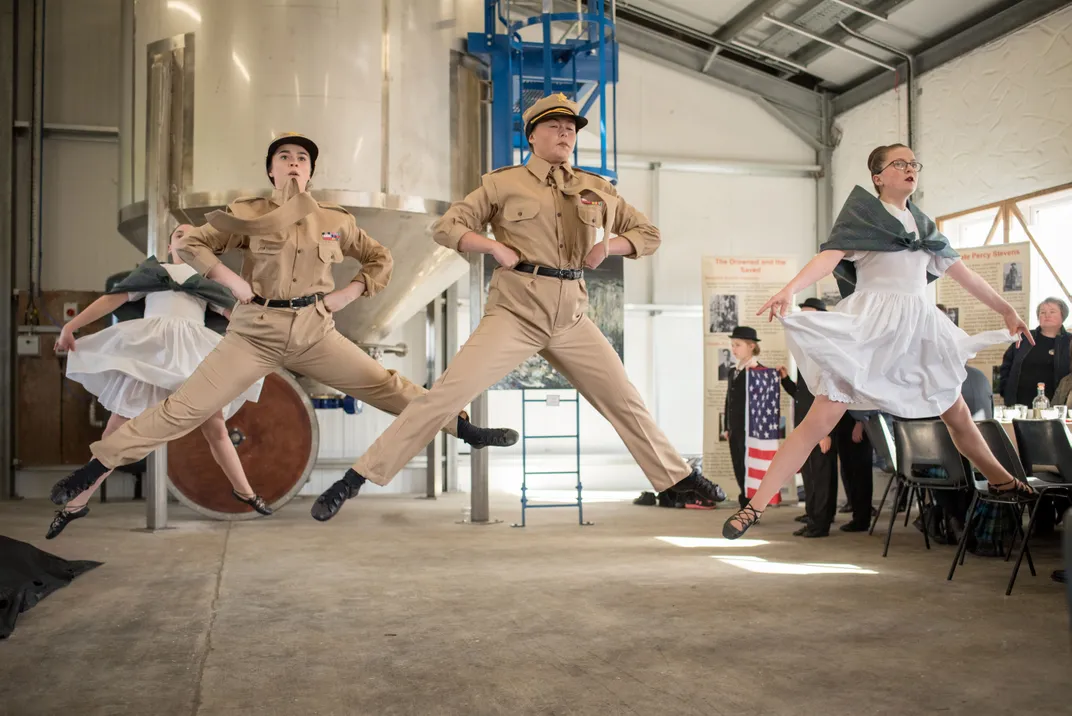


/https://tf-cmsv2-smithsonianmag-media.s3.amazonaws.com/accounts/headshot/kurin.png)